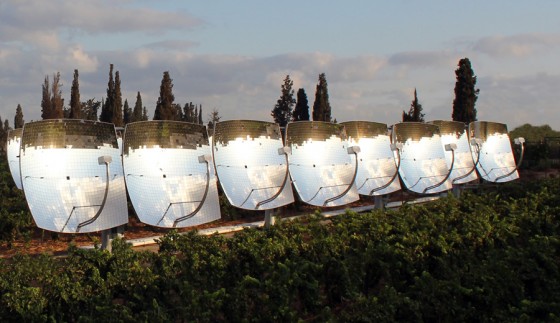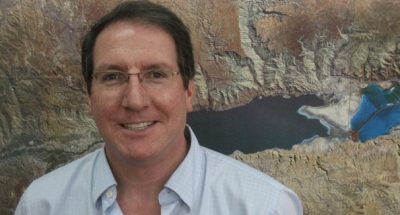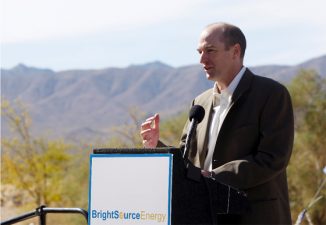Israel’s research labs such as National Solar Energy Center, Grand Technion Energy Program (GTEP) and companies such as Zenith Solar and Arava Power Systems are developing advanced solar energy technology which is nearly cost-competitive with fossil fuels. Israel’s solar technology has been used in places as far away as Australia and China. Combine this with the fact that about 60 percent of Israel is a desert averaging more than 9 hours of sunshine per day and Israel’s solar energy industry should have a bright future. But as of 2011 Israel had only installed 190 Megawatts of peak photovoltaic power generation capacity. This is about 3 photovoltaic watts per person. This places Israel at the top of the MENA countries, well ahead of Turkey which only has 0.1 peak photovoltaic watts installed per capita. But outside of MENA, 19 countries exceed Israel’s photovoltaic generating capacity. This surprising list includes such cloudy northern places as Canada with twice and Germany with 60 times Israel’s per capita photovoltaic capacity.
So what’s the problem?
Some solar power advocates claim that the reason for Israeli solar’s failure to thrive is that Israel’s government doesn’t do enough to encourage solar energy or that government bureaucracy actually discourages photovoltaic installations. Israel’s Public Utility Authority (PUA) introduced feed-in tariffs in 2008 in an effort to encourage solar energy deployments. Feed-in tariffs are intended to compensate for high start-up and KWh production costs so that solar can compete with legacy energy generation technologies. Feed-in tariffs have allowed green alternative energy systems to compete with legacy technology in Israel and elsewhere.
But the tariffs introduce a level of bureaucratic complexity to solar installations. Solar utilities can’t afford to ignore the tariffs that their competitors are benefiting from. PUA’s scheme limits residential feed-in tariffs to 15KWp and commercial feed-in tariffs to 50KWp with a 50MW total installation limit for the first 7 years. Residential and large scale commercial solar companies are competing for licenses which entitle them to a slice of this pie.
But now that photovoltaics have dropped as low as $1/Watt, PUE is considering reducing feed-in tariffs by up to 34% from last year to 65 agorot per kilowatt hour. This move is intended to save ratepayers NIS 2 billion which would otherwise become windfall profits for solar utilities.
In a Jerusalem Post article published early last month, Arava Power Company CEO Jon Cohen said that such low feed-in tariffs would cause Israel’s green energy possibilities to “slip between our fingers.” He went on to say that because of this policy, Eliat’s generators would continue to burn diesel during times of peak demand at a cost that exceeds the feed-in tariff.
Photo of solar energy collectors from Zenith Solar




